On Saturday 30 October we assembled on the banks of the Carrowniskey River. After a briefing on health and safety near water and the need for biosecurity we moved upstream to Glen Keen bridge and took a set of hand-picking stone-wash samples being careful not to kick into any potential salmon or trout redds with newly laid eggs. As a general rule it is now advised not to kick sample during the closed season for salmon and trout.
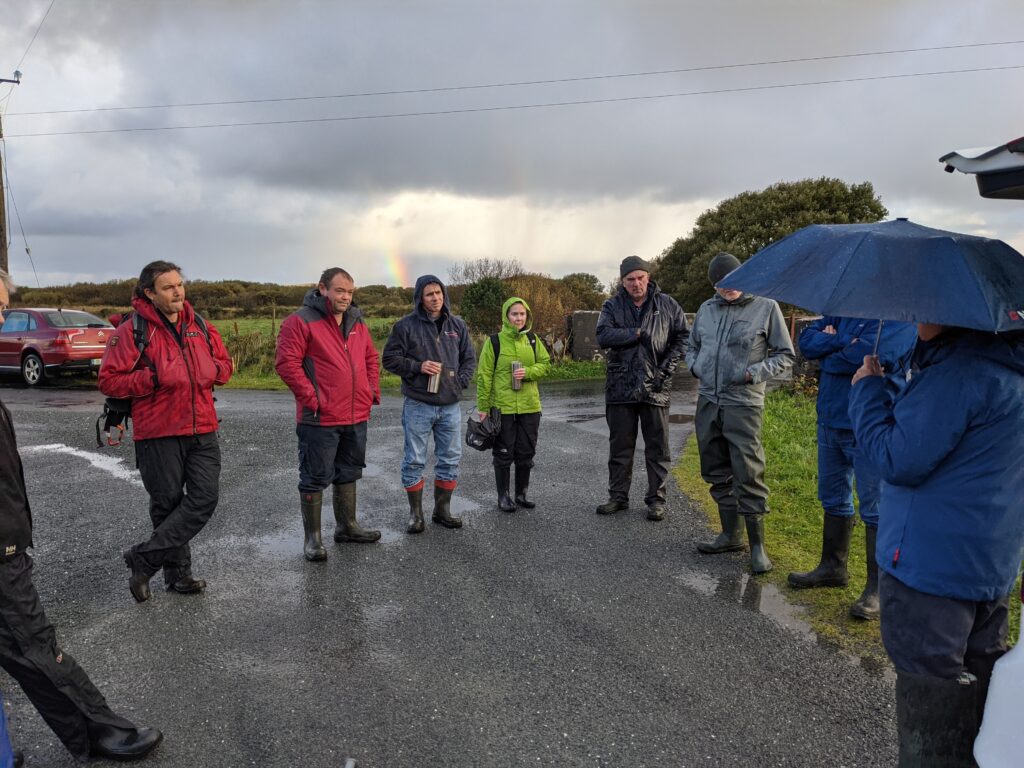

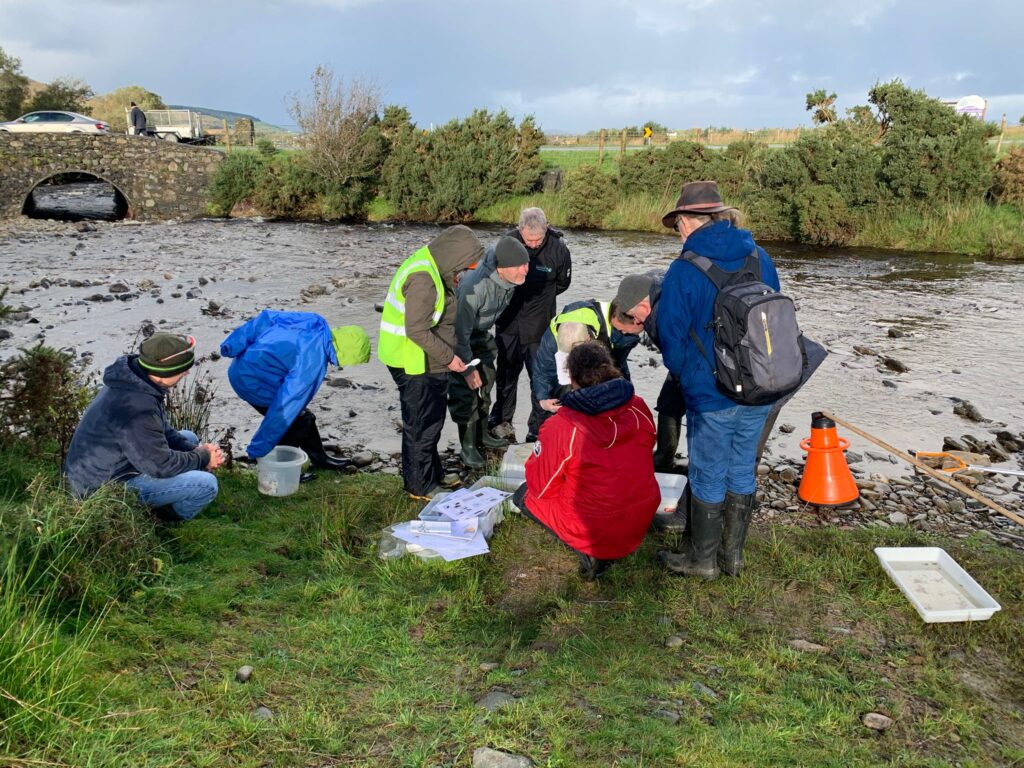
The Carrowniskey River is a steep fast-flowing river with a nice range of pollution-sensitive macroinvertebrates present. A number of trays were filled with the stone-wash samples and we examined them in some detail. The pollution-sensitive types were contrasted with the more pollution-tolerant types and the basic principles of how the ecological status of a river is determined using the biological quality elements and supporting elements such as dissolved oxygen. We showed how oxygen, temperature, pH and conductivity of a river are measured using a hand-held field meter and suitable probes for each element.
Ken pointed out the river reaches suitable for trout, sea-trout and salmon at various stages of their life cycle and a lively discussion ensued!
Glen Keen Farm kindly hosted us for lunch!
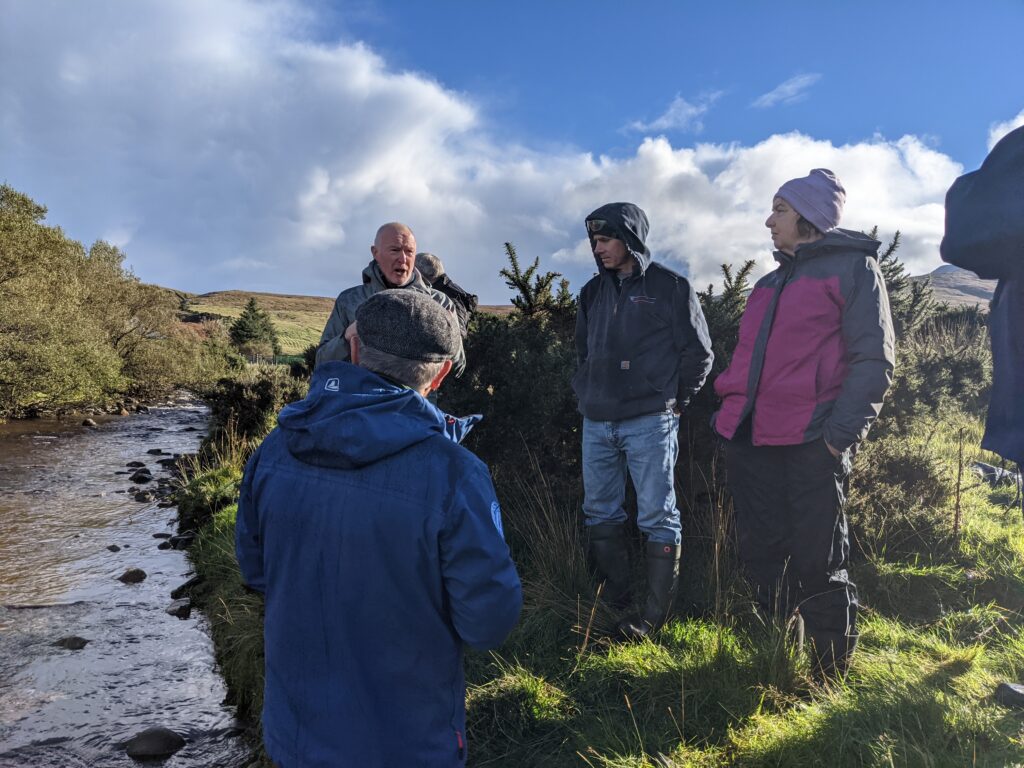
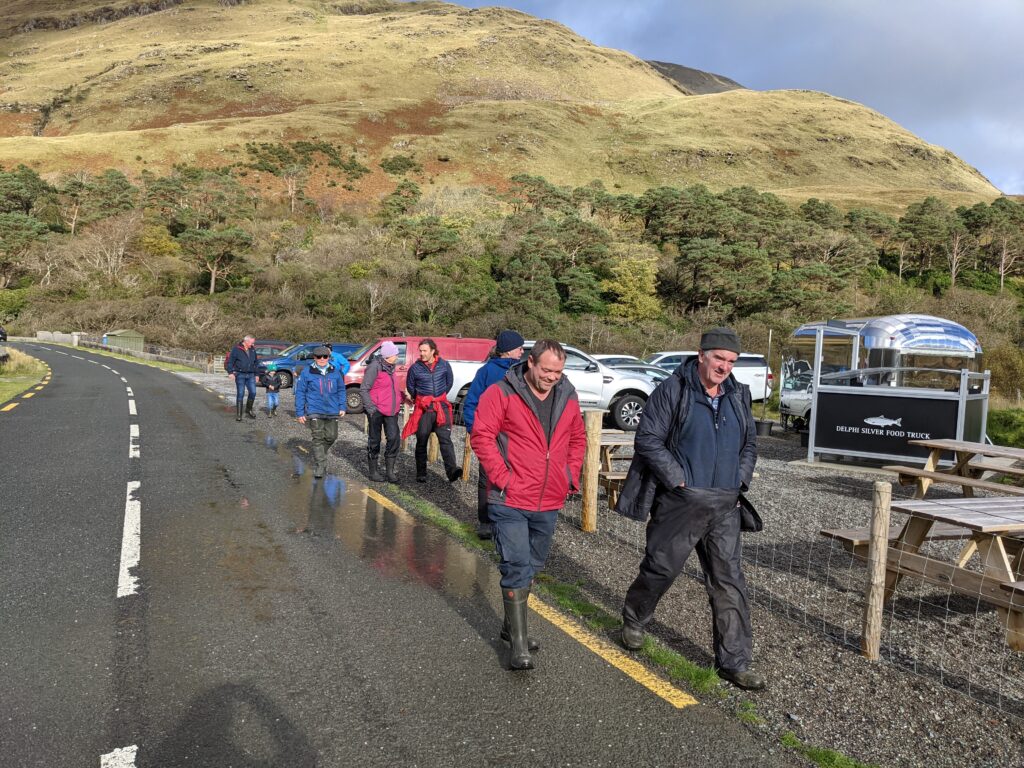
After lunch a number of the group visited the Glenummera River just upstream of where it flows into Doo Lough. A section of the river bank on a bend in the river had been restored using ‘soft engineering’ with willow rods set into the river bank to prevent erosion. The work has been successful and now a number of years later the willows have rooted and sprouted branches.
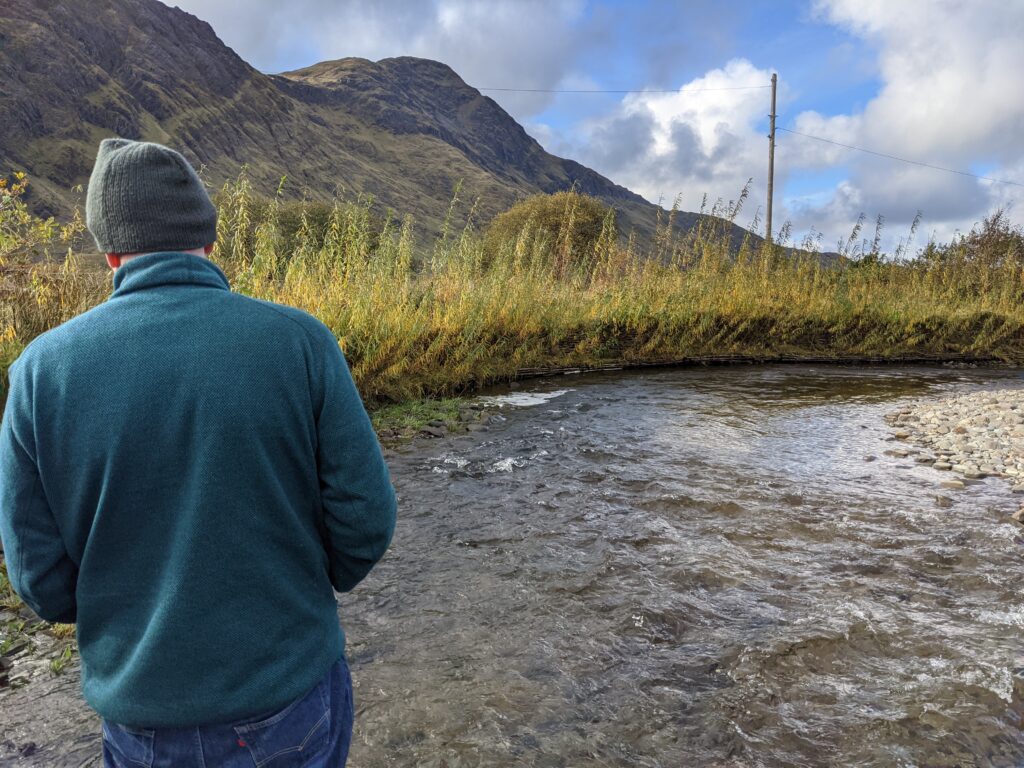
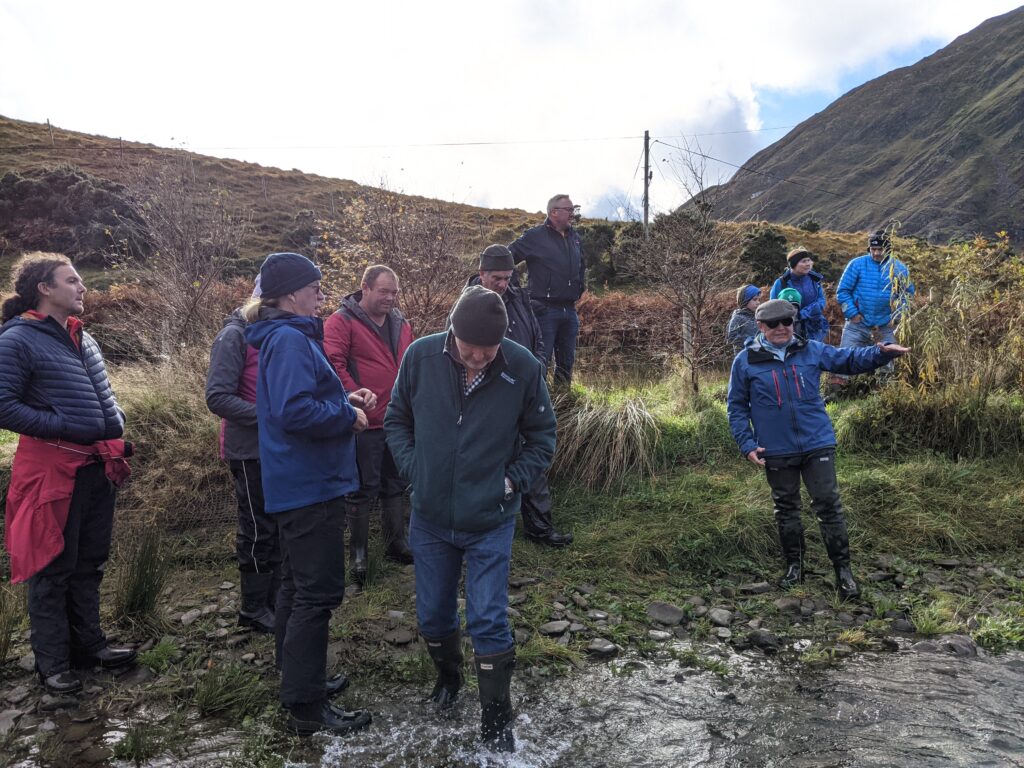
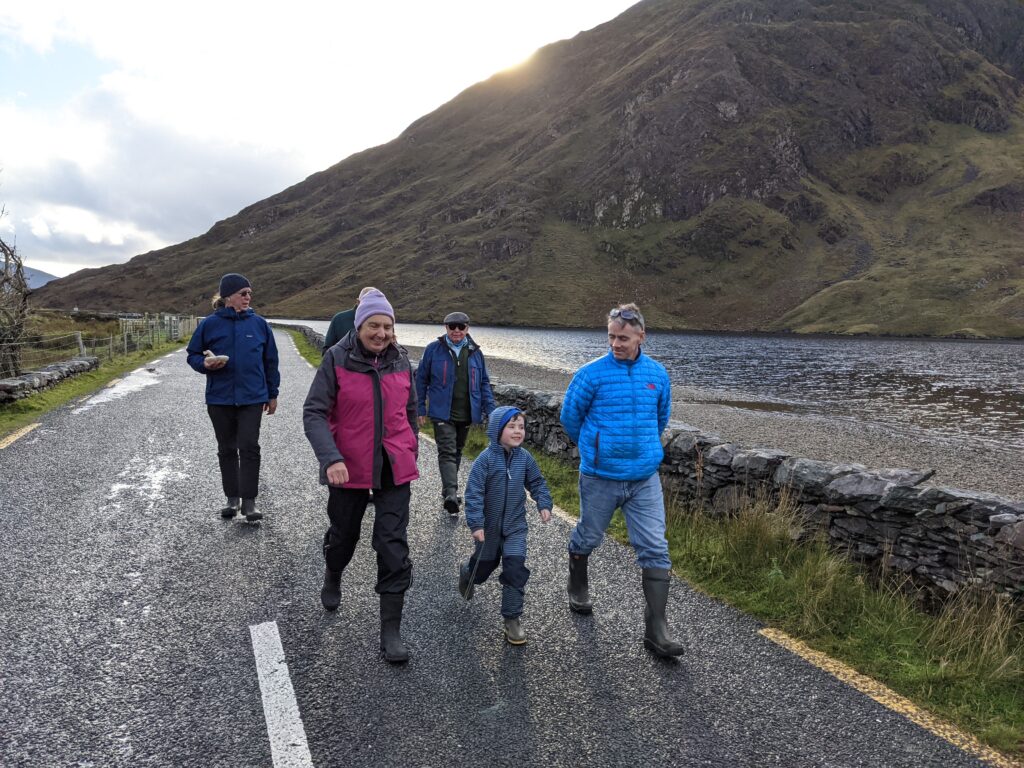
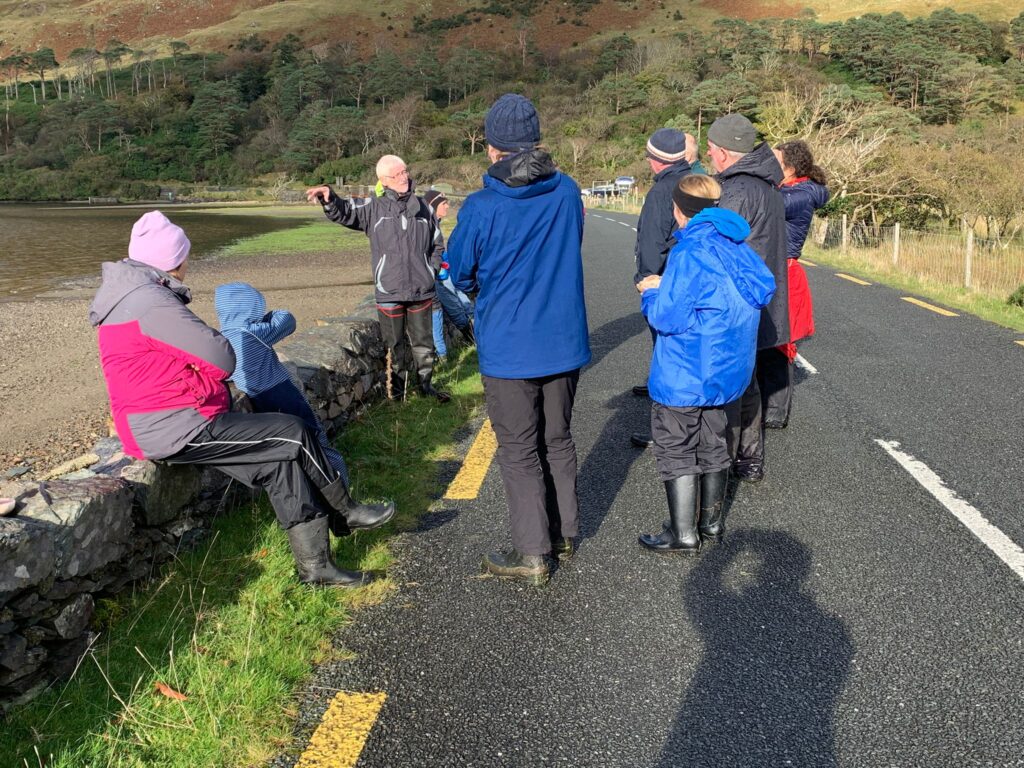
We stood on the shore of the beautiful Doo Lough and gave a general introduction to lakes and how they work with lots of anecdotes and memories regarding issues and problems arising in lakes in Ireland over the past 50 years or so.
Finally, we visited a tributary of the Bunowen near Kilsallagh, Louisburgh to assess the viability, etc., of a proposed new native woodland/riparian woodland scheme.